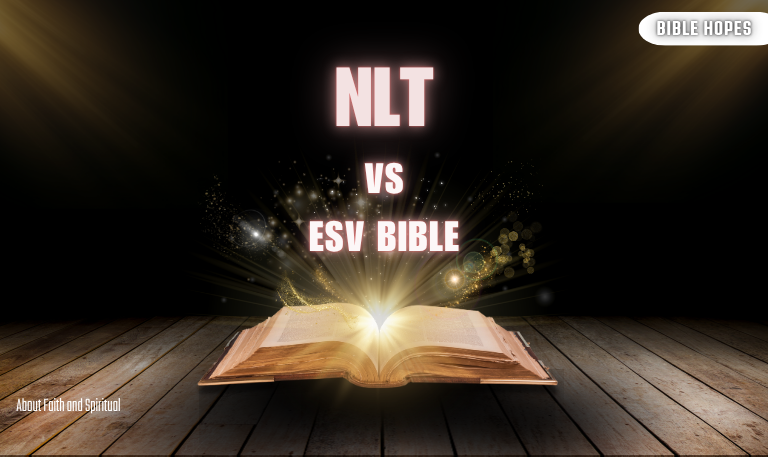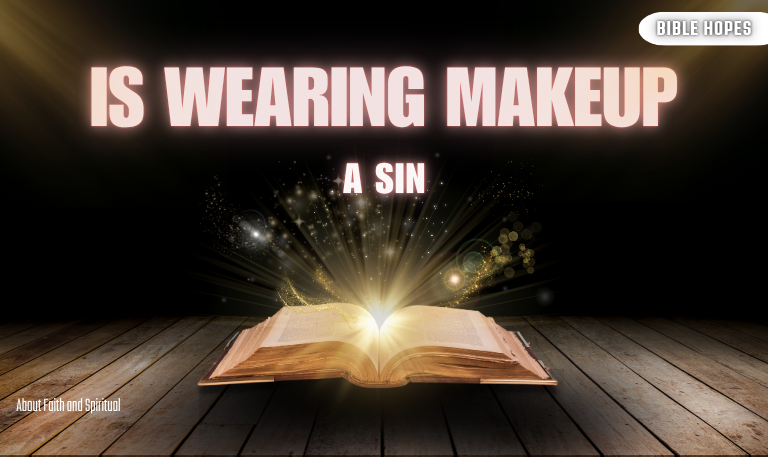When it comes to choosing a Bible translation, two names often stand out among readers, churches, and scholars alike: the New Living Translation (NLT) and the English Standard Version (ESV). Both are widely used, highly respected, and yet serve distinct purposes depending on what you seek in your Bible reading and study experience.
This detailed guide explores everything you need to know about the NLT vs ESV Bible debate — from their history and translation philosophy to their readability, theological nuances, and practical applications. Whether you are a seasoned Bible student, a pastor preparing sermons, or a newcomer looking for your first Bible, this article will help you make an informed choice.
What Are the NLT and ESV Bibles?
Before diving into comparisons, let’s briefly define what each Bible version is.
New Living Translation (NLT): First published in 1996 by Tyndale House Publishers, the NLT is a thought-for-thought translation. Its goal is to make the Bible easy to read and understand, using contemporary English that flows naturally.
English Standard Version (ESV): Released in 2001 by Crossway, the ESV is a word-for-word (formal equivalence) translation. It aims to maintain the exact wording and structure of the original Hebrew, Aramaic, and Greek texts while being readable in modern English.
History and Origins of NLT and ESV
| Feature | New Living Translation (NLT) | English Standard Version (ESV) |
|---|---|---|
| First Published | 1996 | 2001 |
| Translation Team | 90+ biblical scholars and linguists | 100+ evangelical scholars |
| Translation Goal | Clear, contemporary readability | Literal accuracy with literary excellence |
| Source Texts | Latest critical Hebrew and Greek texts, with dynamic equivalence | Based on Biblia Hebraica Stuttgartensia and Nestle-Aland Greek text, formal equivalence |
The NLT was originally a revision of The Living Bible, but retranslated fully from original languages, aiming to communicate the Bible’s meaning with clarity and natural English. The ESV grew out of the Revised Standard Version lineage, emphasizing faithfulness to the original text while still being readable.
Read Also: Was Jesus a Muslim
Translation Philosophy: Dynamic vs Formal Equivalence
Understanding translation philosophy is key to why these Bibles read differently:
NLT (Dynamic Equivalence / Thought-for-Thought):
This approach focuses on conveying the thought or idea behind the original text rather than the exact words. This results in smooth, natural sentences that are easier for modern readers to understand. It often rephrases idioms or cultural references to be clearer.ESV (Formal Equivalence / Word-for-Word):
Formal equivalence attempts to stick as close as possible to the original wording and grammatical structure. The goal is accuracy and literalness, sometimes at the expense of modern readability.
| Aspect | NLT | ESV |
|---|---|---|
| Translation Type | Thought-for-thought (Dynamic) | Word-for-word (Formal) |
| Readability | Very high | High but slightly more formal |
| Faithfulness | To meaning | To original wording and syntax |
| Suitable For | Devotional reading, new believers | Detailed study, memorization |
Textual Basis: Manuscripts Behind the Translations
Both translations rely on the most reliable ancient manuscripts but differ slightly in manuscript traditions used:
NLT uses the Nestle-Aland Novum Testamentum Graece (27th edition) for the Greek New Testament and the Biblia Hebraica Stuttgartensia for the Old Testament, plus some manuscript evidence from the Dead Sea Scrolls and other discoveries.
ESV primarily uses the Biblia Hebraica Stuttgartensia for Hebrew texts and the Nestle-Aland Novum Testamentum Graece (28th edition) for Greek texts, emphasizing textual fidelity.
These minor differences can cause slight variations in verse wording or verse numbering but do not significantly affect doctrinal content.
Readability and Language Style
Reading Level Comparison
NLT: Approximately 4th to 6th-grade reading level — designed to be accessible to most readers including children and those new to English.
ESV: Approximately 9th to 11th-grade reading level — more formal and traditional but still clear and readable for mature audiences.
Language Style
| Feature | NLT | ESV |
|---|---|---|
| Language | Contemporary, conversational | More traditional, literary, formal |
| Use of Archaic Terms | Rare | Occasional (thee, thou in poetic passages) |
| Sentence Structure | Simpler, shorter sentences | Longer, complex sentence structures |
| Use in Public Reading | Highly suitable due to smooth flow | Suitable but may require familiarity |
The NLT is praised for being easy to read aloud and grasp quickly, while the ESV is preferred for its classic tone and literary beauty.
Theological Nuances and Doctrinal Considerations
Both translations are produced by conservative evangelical teams aiming for theological soundness, but their approach to doctrinally sensitive passages can differ due to translation style.
NLT: Sometimes paraphrases or simplifies complex theology for clarity, which can slightly soften some doctrinal emphases.
ESV: Tends to preserve theological terms and complex phrasing, appealing to readers seeking more precise doctrinal language.
Example: The Greek word “agape” (love) might be translated as simply “love” in both, but NLT might paraphrase expressions to emphasize relational meaning, whereas ESV retains literal phrasing.
Use in Churches and Denominations
| Bible Version | Popularity Among Denominations | Typical Use Cases |
|---|---|---|
| NLT | Evangelical, non-denominational, youth groups | Devotionals, new believers, outreach |
| ESV | Reformed, conservative evangelical, academic | Sermon preparation, detailed study |
The ESV is widely used in reformed and conservative circles due to its formal equivalence. The NLT has gained traction in many evangelical and non-denominational churches for its accessibility.
Study Bibles and Additional Resources
Both translations offer excellent study Bibles:
NLT Study Bibles:
Emphasize application, devotional notes, and contemporary insights. Popular editions include the NLT Life Application Study Bible.ESV Study Bibles:
Emphasize original language insights, theological depth, and detailed commentary. Notable editions include the ESV Study Bible (Crossway).
Choosing between these often depends on whether you prefer application-oriented notes (NLT) or academic and doctrinal notes (ESV).
Digital, Audio, and Accessibility Options
NLT:
Available in numerous Bible apps (YouVersion, Olive Tree), audio Bibles narrated with clear, friendly voices, and multiple print formats for all ages.ESV:
Also widely available digitally and in audio format, with a focus on scholarly tools like interlinear Bibles and advanced search features in apps.
Both versions are accessible globally in print, digital, and audio formats.
Strengths and Weaknesses of NLT and ESV
| Strengths | NLT | ESV |
|---|---|---|
| Clarity and ease of understanding | Excellent for new readers and devotional use | High fidelity to original languages, suitable for study |
| Contemporary language | Feels natural and conversational | Preserves traditional Bible cadence |
| Application notes and devotionals | Rich supplementary material available | Comprehensive study Bibles with academic notes |
| Suitable for memorization | Good, but some paraphrasing may affect exact wording | Excellent due to literal translation |
| Weaknesses | NLT | ESV |
|---|---|---|
| Some paraphrasing | May lose some nuances of original texts | Can be harder for beginners to understand |
| Formality | May be seen as too casual by traditionalists | Some passages feel stiff or archaic |
Popular Bible Verses Compared: NLT Vs ESV
| Verse | NLT Version | ESV Version |
|---|---|---|
| John 3:16 | “For God loved the world so much that he gave his one and only Son…” | “For God so loved the world, that he gave his only Son…” |
| Psalm 23:1 | “The Lord is my shepherd; I have all that I need.” | “The Lord is my shepherd; I shall not want.” |
| Romans 8:28 | “And we know that God causes everything to work together for the good…” | “And we know that for those who love God all things work together for good…” |
| Philippians 4:13 | “For I can do everything through Christ, who gives me strength.” | “I can do all things through him who strengthens me.” |
The differences often lie in sentence structure and word choice, with NLT opting for more explanatory phrases.
Read Also: Is God Jewish
Which Bible Translation Is Best for You?
Consider your goals:
Choose NLT if:
You want a Bible easy to read and understand
You are new to Bible reading or teaching children
You prefer devotional and application-based reading
Choose ESV if:
You want a literal, precise translation for study and teaching
You appreciate a more formal, literary style
You need a reliable translation for memorization and scholarly work
Tips for Using Both NLT and ESV Effectively
Use the NLT to grasp the general meaning and application.
Refer to the ESV for detailed study and theological depth.
Consider parallel reading or using Bible apps that display multiple versions side-by-side.
Use the strengths of each to deepen your understanding.
NLT vs ESV Bible FAQs
Q: Is the NLT Bible accurate?
A: Yes, the NLT is based on original Hebrew and Greek manuscripts and is accurate but uses thought-for-thought translation for readability.
Q: Is the ESV Bible more literal?
A: Yes, the ESV uses a formal equivalence, aiming for word-for-word accuracy.
Q: Which Bible translation is easier to read?
A: NLT is easier to read for most people due to its contemporary language and simplified phrasing.
Q: Can I use NLT and ESV interchangeably?
A: Yes, many readers use both to balance clarity and precision.
Q: Which Bible is best for beginners?
A: NLT is generally recommended for beginners because of its accessible language.
Q: Are there theological differences between NLT and ESV?
A: Both are conservative evangelical translations and generally align doctrinally, but their wording style can influence interpretation nuances.
Q: Which Bible is preferred in evangelical churches?
A: Both are popular; ESV is common in reformed churches, NLT in broader evangelical circles.
Q: Does the NLT use gender-inclusive language?
A: The NLT sometimes uses gender-neutral terms for readability but is careful to maintain theological accuracy.
Conclusion
Choosing between the NLT and ESV Bibles comes down to your reading preferences, study goals, and theological needs. Both translations offer trustworthy, biblically sound text, but each serves a different purpose:
The NLT shines in accessibility and everyday reading.
The ESV excels in precise, literal study and teaching.
Many mature Bible readers benefit from using both in tandem. By understanding their differences and strengths, you can select the Bible translation that best supports your spiritual journey and enriches your connection with Scripture.



